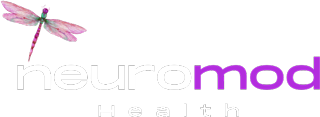Blog
Transcranial Magnetic Stimulation (TMS) and Electroconvulsive Therapy (ECT) for Depression Treatment
- August 22, 2023
-
NeuroMod Health

When addressing depression, patients and medical practitioners have an array of therapeutic options at their disposal. Two prominent treatments, Transcranial Magnetic Stimulation (TMS) and Electroconvulsive Therapy (ECT), have demonstrated efficacy in managing depression.
Notably, the FDA has approved the use of TMS, even after a single antidepressant trial, debunking the misconception that it should only be considered as a last-resort treatment.
Recent Posts

What Teens Can Expect During Their First TMS Session
Transcranial Magnetic Stimulation (TMS)
TMS, noninvasive and virtually painless procedure, targets specific brain regions involved in mood regulation. During a TMS session, a specialized device emits focused magnetic pulses through the skull, stimulating nerve cells in the designated area.
TMS is typically performed on an outpatient basis without the need for general anesthesia. Patients are awake and alert throughout the procedure. This aspect makes TMS a safer and more manageable option, especially for those who are apprehensive about anesthesia.
Following a TMS session, patients can immediately resume their daily activities, including driving, without any restrictions.
Electroconvulsive Therapy (ECT)
ECT, a potent treatment for severe depression and other mental health disorders.
During an ECT session, patients receive general anesthesia to induce unconsciousness. A controlled electrical current then passes through the brain, deliberately triggering a seizure. This seizure activity is believed to confer therapeutic benefits, leading to mood improvements.
Due to the use of anesthesia, individuals undergoing ECT may require a recovery period before resuming normal activities. In many cases, patients are advised not to drive for up to 24 hours after the procedure, which can be inconvenient and may require assistance from others.
When evaluating depression treatment options, patients and healthcare providers should carefully consider the pros and cons of different approaches. Both TMS and ECT offer viable routes for treatment.
TMS stands out as a non-invasive, outpatient procedure without the need for anesthesia or seizure induction. This makes it a safer and more accessible choice for many individuals.
Ultimately, the decision between TMS and ECT should be based on a thorough assessment of each patient’s unique circumstances, medical history, and preferences. Consulting with a qualified healthcare professional is essential to determine the most suitable treatment plan, ensuring effective depression management and overall mental well-being.
Live Happy,
NeuroMod Health


